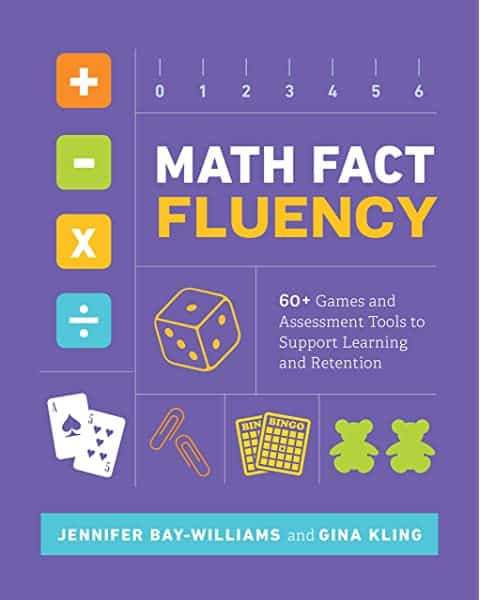
Mastering the basic facts for addition, subtraction, multiplication, and division is an essential skill for all students. But what’s the best way to get there?
Math Fact Fluency is an amazing book that answers that question, provides insight and research as well as suggestions and games to help your students become more confident, adept, and successful at math.
The authors of the book developed these games, but I have made them for you! The games are fun, but they also provide opportunities to talk about strategies, practice a newly learned strategy, and become more efficient at using strategies until automaticity with the basic facts have been attained. These games will help kids develop fluency (skill in carrying out procedures flexibly, accurately, efficiently, and appropriately).
Here is a very brief overview of the book:
The authors explain that basic facts are the foundation on which all mathematical computation is based. However, many students leave elementary school lacking fluency with the basic facts. The games provided are structured around five fundamentals for transforming basic fact instruction:
Fundamental 1: Mastery Must Focus on Fluency
- Accuracy: the ability to produce mathematically precise answers
- Efficiency: the ability to produce answers relatively quickly and easily
- Appropriate strategy use: the ability to select and apply a strategy that is appropriate for solving the given problem efficiently
- Flexibility: the ability to think about a problem in more than one way and to adapt or adjust thinking if necessary
Fundamental 2: Fluency Develops in Three Phases:
- Phase 1: Counting (counts with objects or mentally)
- Phase 2: Deriving (uses reasoning strategies based on known facts)
- Phase 3: Mastery (efficiently produces answers)
Fundamental 3: Foundational Facts Must Precede Derived Facts
Research suggests that the most effective approach to learning facts is to master the foundational facts (plus/minus 0, 1, 2 for addition and subtraction and 2s, 10s, 5s, 1s, 0s, squares (in that order) for multiplication). The remaining facts can be derived from the foundational facts through strategy application.
Fundamental 4: Timed Tests Do Not Assess Fluency
Games and challenges are the alternative to timed tests. They allow students time to practice and allow you the chance to assess whether or not they use strategies correctly and have automaticity with the basic facts.
Fundamental 5: Students Need Substantial and Enjoyable Practice
The games are fun, but they also provide opportunities to talk about strategies, practice a newly learned strategy, and become more efficient at using strategies until automaticity with the basic facts has been attained. These games will help kids develop fluency (skill in carrying out procedures flexibly, accurately, efficiently, and appropriately.
